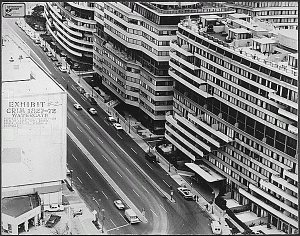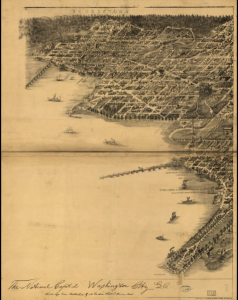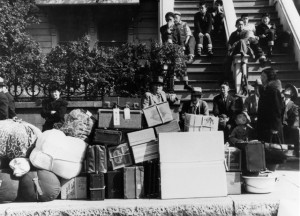The initial start of my research began with the search engine JSTOR, accessed through the George Mason University online library. I used the keywords “History of the District Columbia 1989-2013” as my starting point to find different articles about Washington D.C. starting from 1989. A variety of journals, each displaying different topics, were available starting with dates as early as 1900. I pulled three journals from this specific search. The next step of the assignment was to search the key phrase “Records of the Columbia Historical Society” looking for articles dating before 1989.
The first article was published by the Journal of Negro Education during the summer of 1999. The journal, Recruiting, Supporting, and Retaining New Teachers: A Retrospective Look at Programs in the District of Columbia Public Schools, is about looking back at a wide range of programs starting in the 1960s to help teachers in the D.C. area make education more engaging for students. The funding came from federal money. However, the programs eventually faded away as did the programs.
The program was originally called the Cardozo Project but renamed to Urban Teacher Corps (UTC). It was based on an internship platform of taking people who did not have a background in education (or very little) and grouping them with five other interns, all receiving a small stipend, who would work with a senior teacher. They would teach two classes in the morning then take seminars in the afternoon about education.
The difference with this article compared to the more recent articles was the layout style and content. Two out of the three other articles which are from 2004 and 2010 both used a significant amount of statistics, graphs, and comparisons. This article did have statistics and facts that could have been formatted into graphs but instead was displayed through sentences. It was more like reading a story instead of reading facts and information set up in a more visual way.
Citation: Judy U. Aaronson The Journal of Negro Education , Vol. 68, No. 3, Recruiting, Preparing, and Retaining Qualified Teachers to Educate All of America’s Children in the 21st Century (Summer, 1999) , pp. 335-342
The second article was published by the Center for Disease Control & Prevention on March 19, 2004. The name of the article is Tuberculosis Outbreak in a Community Hospital-District of Columbia, 2002. In this article, the names of the hospital are disclosed and the writer uses “Hospital A” and “Hospital B” instead. Another difference in the writing style is the article is broken up into sections instead of being clumped together like the article from 1999. Each section is about 5-6 sentences long, some with charts and graphs about statistics on patients who had Tuberculosis. The references was also set up differently, this article uses footnotes while the previous article used MLA formatting.
Citation: Morbidity and Mortality Weekly Report , Vol. 53, No. 10 (March 19, 2004) , pp. 214-216
The third article was also published by the Center for Disease Control & Prevention on June 25th 2010. The article called, Expanded HIV Testing and Trends in Diagnoses of HIV Infection-District of Columbia, 2004-2008, was to raise awareness to D.C. residents. This article like the other CDC article had statistics and numbers from different HIV tests done on numerous people across the United States. However, the difference is that it is more focused on raising awareness on how fast the disease is spreading throughout America. There is an added sub article about National HIV Testing Day-June 27th to allow the readers to know how serious the disease is and to get tested. Compared to the first article, this article is focused on facts and not story telling.
Citation: Morbidity and Mortality Weekly Report , Vol. 59, No. 24 (June 25, 2010) , pp. 737-741
The final article was searched by using the key phrase “Records of the Columbia Historical Society of Washington D.C. before 1989.” The article was published by Penn State University Press in January 1973. This article like the first one is more opinionated and focused on telling a story rather then giving facts. It is not chopped up into different sections but put together like pages out of a book.
In my opinion it makes reading articles like this and the one on education from 1999 more difficult and less interesting to read simply due to the format and styling of the article. There are no key words or statistics making it more of a process or to retain information.
Citation: Records of the Columbia Historical Society of Washington, D. C., 1969-1970 by Francis C. Rosenberger Review by: Melville J. Boyer Pennsylvania History , Vol. 40, No. 1 (JANUARY, 1973) , pp. 112-113





